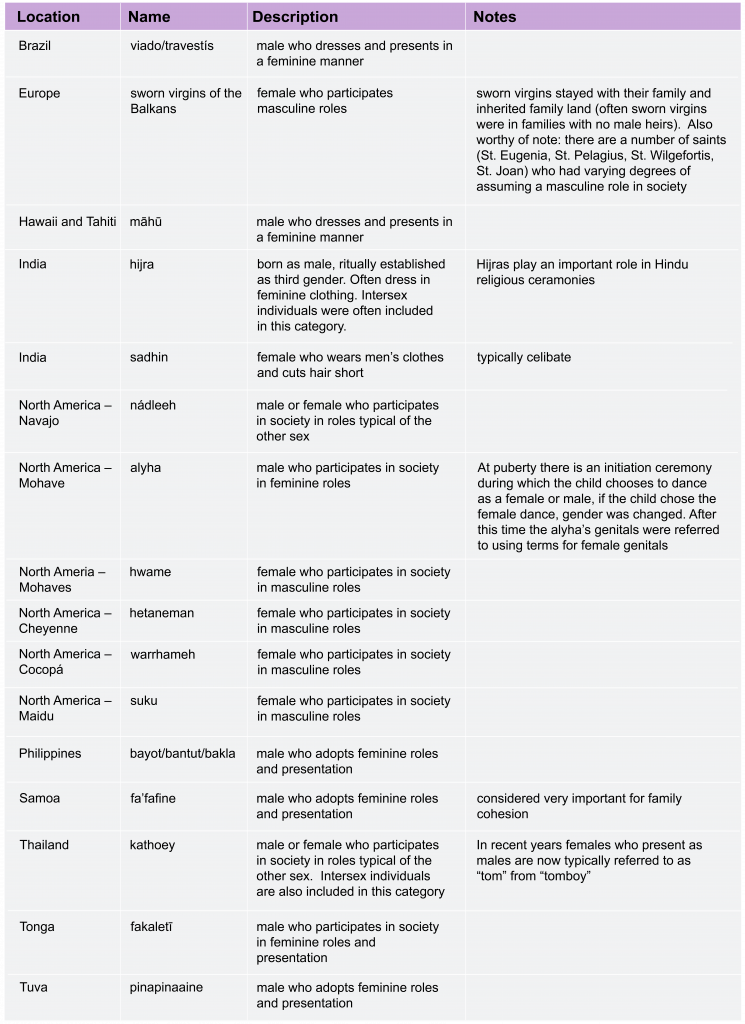8.11 Wrapping Up: What is Gender?
 The concept of gender
The concept of gender
Above we defined the sexes by the size of gamete produced. The terms sex and gender are often used interchangeably. However, for our discussions we will distinguish between the terms. The American Psychological Association states, “Gender refers to the socially constructed roles, behaviors, activities, and attributes that a given society considers appropriate for boys and men or girls and women. These influence the ways that people act, interact, and feel about themselves.” In short, gender has to do with the roles one plays in society and is often influenced, but not necessarily determined, by sex. Gender roles vary from culture to culture in humans. For a brief description of some of the varied gender roles across cultures, see Table 1. Societal roles in non-human animals are harder to interpret, however there is also evidence of more than two gender roles in a number of non-human animals (see discussion of white-throated sparrows and bluegill in the beginning of this chapter).
In recent years there has been growing popular awareness that people do not all identify as the gender commonly associated with the sex they were assigned at birth or conform to the concept of gender as binary (they do not strictly identify as man or woman). However, historic and linguistic evidence indicates that non-binary gender is not a new phenomenon and can be observed across human cultures in both modern and historic times (see Table 1). It is worth noting that while we learned earlier that there are genetic factors that can cause a person to have intersex characteristics, most people who do not fit in a gender binary or identify as the opposite gender from the sex they were assigned at birth, do not have any identifiable genetic condition associated with sex.
Read More
The link has some excellent tips on how to be supportive to someone who is gender non-binary or transgender. https://www.glaad.org/transgender/allies
The white-throated sparrow and the bluegill and the great diversity of sex and gender presentations in humans and other sexually reproducing organisms illustrate that sex and gender are complicated. Our idea of sex as binary is imperfect at best. The idea that gender is beyond binary is supported by biology, sociology, and history.
Studies of and discussions of sex and gender can be controversial. Any discussion of sex and gender is almost certain to make at least some participants uncomfortable. However, there are fascinating aspects of the biology surrounding sex and the sociology surrounding gender that make exploration into these topics worthwhile. Our understanding of sex determination is growing rapidly, and our understanding of the relationship between sex and gender is in its infancy.


